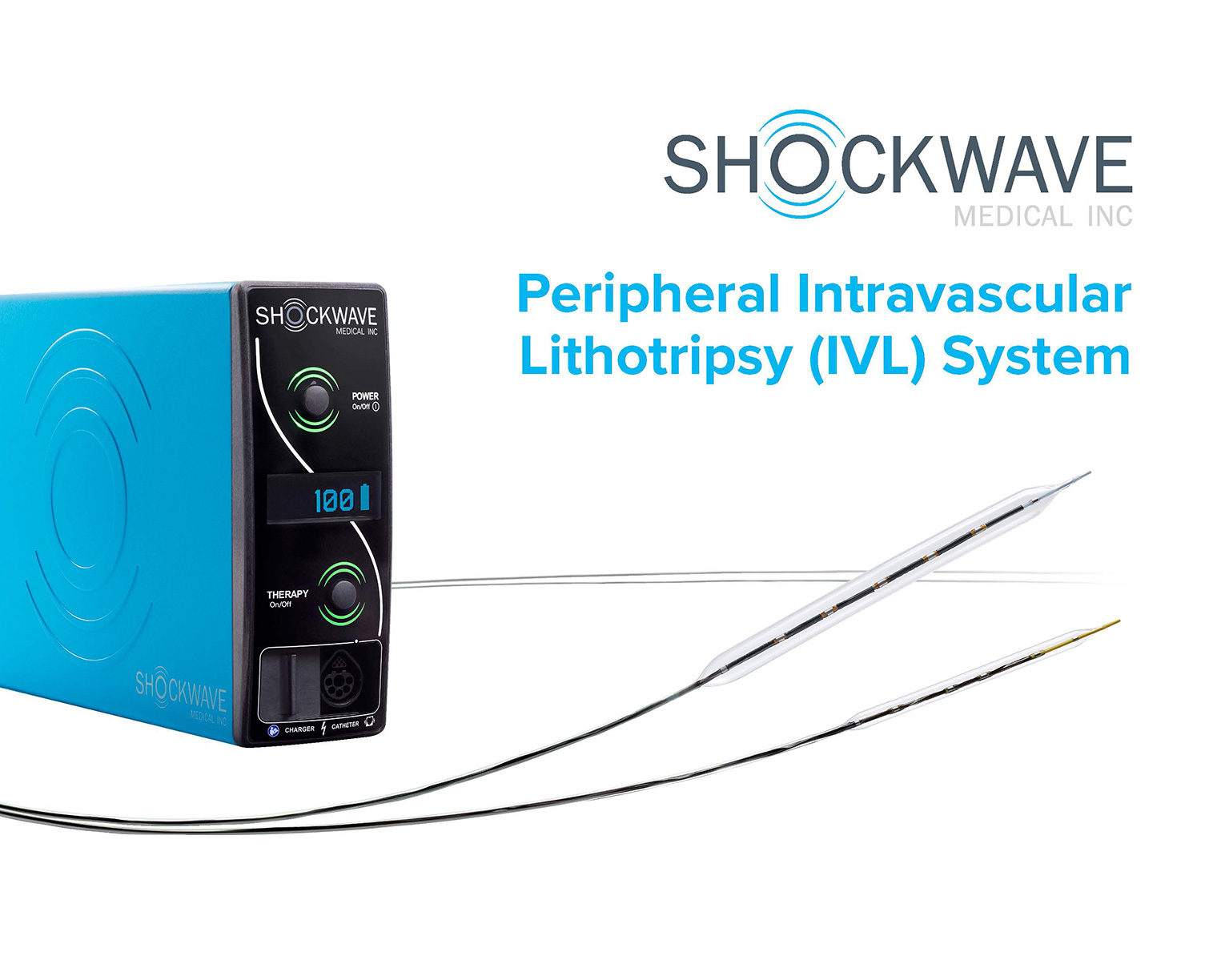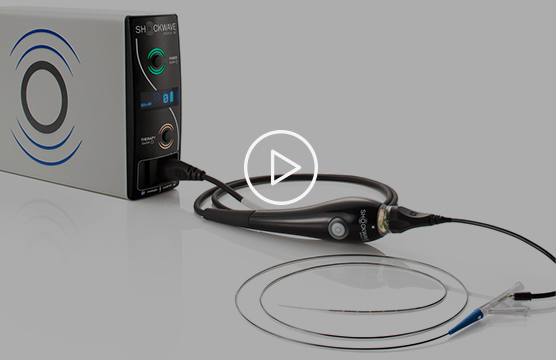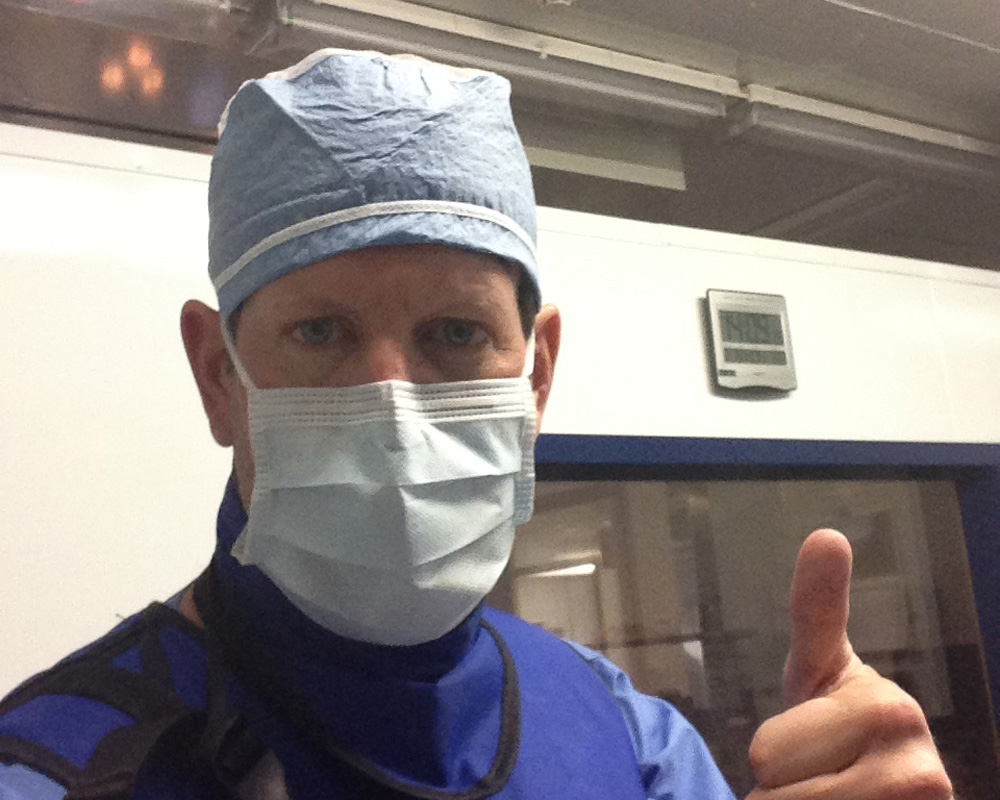Technologies
Shockwave Medical Targeting Calcified Plaque:
An Interview with Todd Brinton of Shockwave Medical
What is the need Shockwave seeks to address?
Our original need statement was to find a way to dilate heavily calcified vascular lesions in patients with obstructive [coronary and peripheral] vascular disease in order to minimize vessel injury.
Patients with coronary and peripheral vascular disease are living longer as a result of improved lifestyle choices and treatment options. But as they age, the plaque in their arteries tends to mineralize and become calcified, which causes the vessels to stiffen and narrow and results in inadequate blood supply to the heart or limbs. The most common method for treating calcified vessels is to use a standard balloon dilation catheter, deployed at a constant, high rate of pressure, to expand the vessel. But in the presence of calcium, this approach can rupture or tear the soft tissue of the vessel. Newer approaches have been developed to address this problem, but they all have limitations.
“Newer approaches have been developed to address this problem, but they all have limitations.”
For example, atherectomy, which uses a catheter with a sharp blade to drill out and remove plaque from the walls of a blood vessel, can cause damage to vessel and if the calcified debris flows downstream and lodges in the smaller arteries. So we started looking for a safer, more effective way to fracture the calcium.
What key insight was most important to guiding the design of your solution?
As part of our research, we investigated how kidney stones, which are also hard deposits, are treated. One common approach is extracorporeal shock wave lithotripsy, a procedure that uses sound waves to break the stones into pieces that are small enough to be passed in the patient’s urine without causing pain or complications. While effective, this type of lithotripsy requires the patient to sit in a water bath while the energy is delivered externally. It can be painful, so it may involve general anesthesia. And patients often need EKG gating because the energy is so strong it can disrupt their heart rhythm.
 Shockwave's current intravascular lithotripsy system.
Shockwave's current intravascular lithotripsy system.
Our insight was related to how lithotripsy works. It uses short, dynamic acoustic pulses to fracture hard material without damaging the tissue and organs around it. The waves of positive and negative pressure break up the kidney stones without damaging the kidney. This got us thinking about how we might adapt this approach to the vasculature. We thought if we could take the same principle and localize it next to the calcium in the vessel wall, we could minimize the side effects while optimizing the efficacy of the approach.
How does your solution work?
Shockwave’s intravascular lithotripsy [IVL] system is built on a balloon catheter platform. But unlike the standard balloon dilatation catheters that rely on a high, constant rate of pressure to fracture the calcium, our approach uses short, dynamic acoustic pulses. The IVL balloon has multiple lithotripsy emitters at its center. When activated, these emitters produce mechanical pulses that are tissue-selective – they pass through the balloon and soft vascular tissue but create micro-fractures in the hard, calcified plaque. Once the calcium has been disrupted, the vessel can be dilated with the balloon catheter using low pressures to prevent injury to the vessel wall.
 This short promotional video, provided by Shockwave Medical, illustrates how the company's system is intended to work (see endorsement disclaimer below).
This short promotional video, provided by Shockwave Medical, illustrates how the company's system is intended to work (see endorsement disclaimer below).
At what stage of development is the solution?
Our IVL system is cleared for use and commercially available in Europe and the US to treat peripheral artery disease. It is also cleared for use and commercially available for the treatment of calcified coronary lesions in Europe and recently began an IDE pivotal trial in the US for coronary clearance. In addition, we have adapted the technology for the treatment of calcified heart valves and are in the process of advancing those solutions toward patient care.
Tell us about a major obstacle you encountered and how you overcame it.
One thing that stands out is how long it took us to raise money initially because people didn’t think we were focusing on a big enough problem. But as an interventional cardiologist, I was doing these cases and they were a struggle for me. And I knew other interventionalists were wrestling with complications from calcified vessels too. So my own personal experience and the experiences of my peers convinced me that this was a real problem.
The issue was that investors often don’t ask physicians about the unmet need. They ask representative from medtech corporations since these organizations are most likely to acquire a new technology in this kind of space. Unfortunately, these companies weren’t thinking about calcified vessels. They weren’t selling anything else in this general area so they didn’t perceive it as a problem.
“I knew how to recognize a good need. And I knew how to ensure that the solution we developed addressed that need very well.”
It took us nine months of phone calls and meetings and personal appeals to convince a handful of investors that we were really onto something. But that’s ultimately what got us to a term sheet.
How did your Biodesign training help you advance the project?
Because of the Stanford Biodesign training, I knew how to recognize a good need. And I knew how to ensure that the solution we developed addressed that need very well.
Reflecting on your experience, what advice do you have for other health technology innovators?
Strap in. You have to have the discipline and willingness to go long. Nothing happens quickly – or I should say, nothing good happens quickly!
 Todd Brinton after a case using the company's intravascular lithotripsy system.
Todd Brinton after a case using the company's intravascular lithotripsy system.
Todd Brinton co-founded Shockwave Medical in 2009 after completing the Biodesign Innovation Fellowship in 2005. To learn more about the technology, visit the Shockwave Medical website.
Disclaimer of Endorsement: All references to specific products, companies, or services, including links to external sites, are for educational purposes only and do not constitute or imply an endorsement by the Byers Center for Biodesign or Stanford University.
